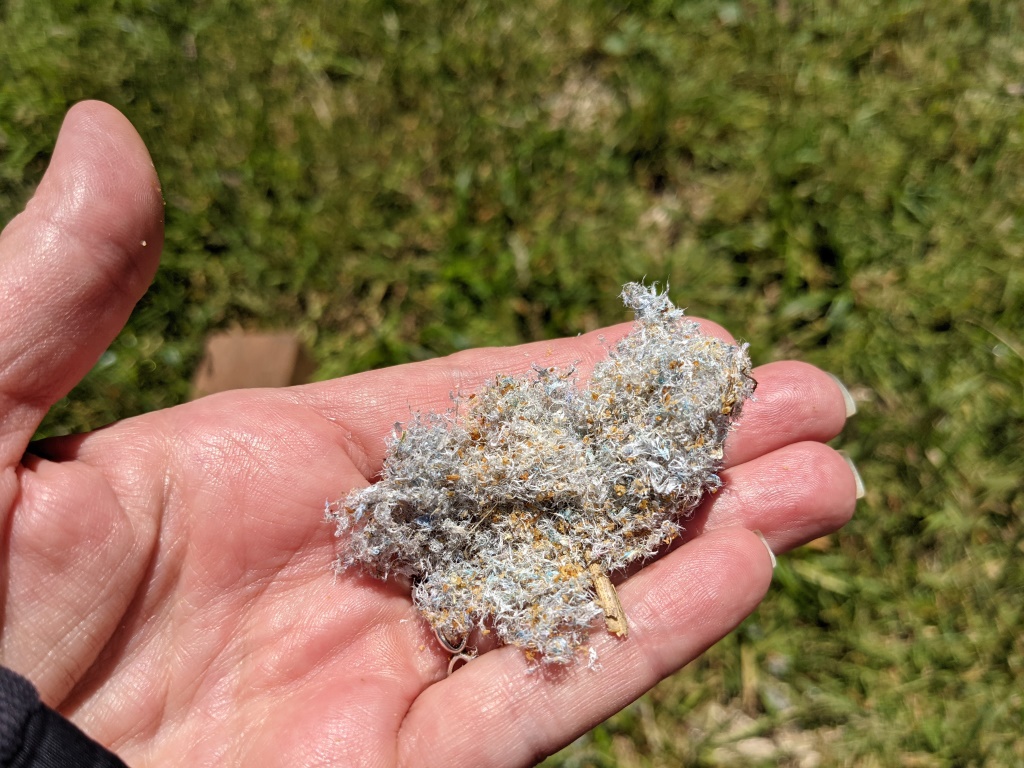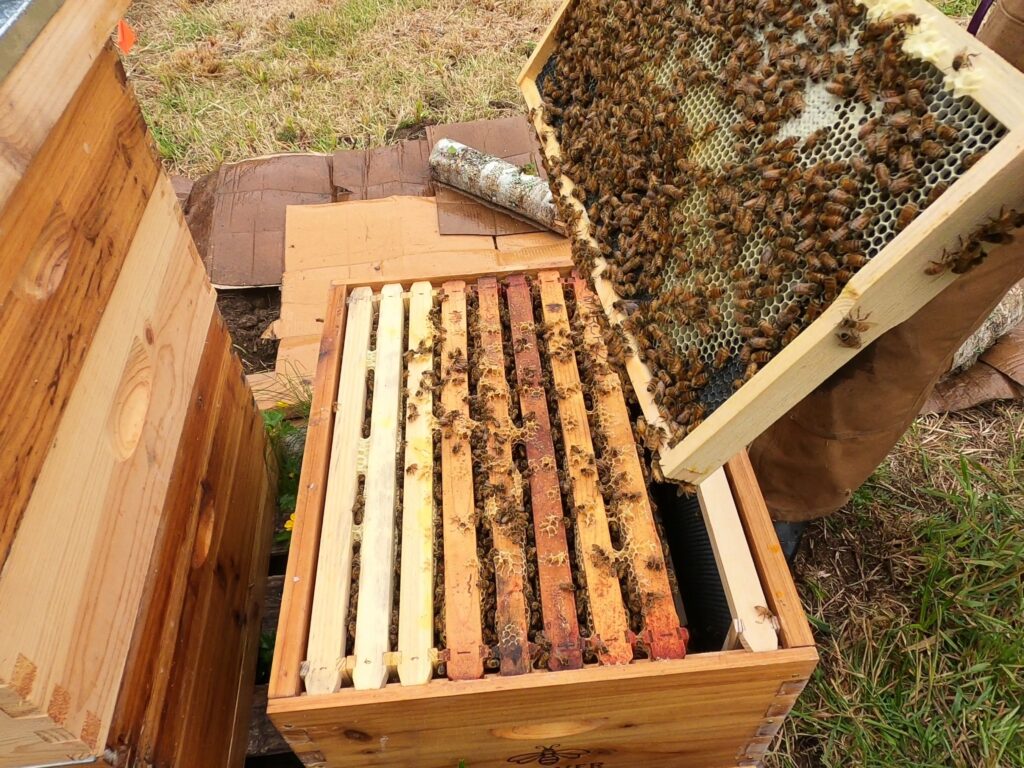We found two swarms of bees hanging in a tree in our yard. Even though we are new to beekeeping we decided to capture the swarms. As it is, we ended up with an open hive in a pretty steady downpour, but we’ll get to that. One swarm was added to a queenless hive while the other was marched into a new nucleus box to start a new hive.
Discovery

Yesterday when looking over what I hope will be next year’s expanded, deer-proof Garden, I noticed a couple of large birds in a tree above the hives in the pasture. It wasn’t unusual since we’d seen a pair of black hawks hanging out and hunting nearby over the past week. But these looked like chickens. Since our chickens were all accounted for (after a quick headcount), I was curious as to where these birds came from and what type they were. After watching them for a bit I realized they weren’t moving like any bird I’d seen before, so I moved a bit closer to get a better look without scaring them away. That’s when I noticed bees flying around the “birds” and realized we had bee swarms. We had bee swarms! We can setup new hives! Can we setup new hives? Should we? Now what?
Preparation

With limited knowledge on what we were actually doing, we right away found a YouTube video from Cotswold Bees that got us up to speed. It was important to make a game plan quickly because swarms can move within several hours. With two separate groups of bees in the same tree the urgency was increased. Also working against us was the 100% chance of constant, coastal rain expected to start in the afternoon. Working with the bees in wet weather is to be avoided when possible, but beekeeping in the Pacific Northwest comes with some precipitation expected.
Equipment:
* Two medium cardboard boxes
* Two queen excluders
* Towels - used for weighing down the boxes in the wind and covering the ramp
* One 5-frame nucleus box with frames
* One 10-frame deep brood box with frames
* The Beekeepers Basics Box (smoker, hive tool, etc)
* A sheet of newspaper
* Pruners
* Stepping stool or ladder
Capture


We decided to trim and then cut down the branches since we wanted to have the best chance of catching the queen. Shaking the branch might fling the queen elsewhere and all the worker bees would follow. We held a cardboard box under the branch and literally caught the falling bundle of bees.
The first swarm scattered a bit, but we were more prepared and were able to catch the second one more intact.

Once the majority of the bees were captured in each cardboard box, hopefully with the queens, they were covered with a queen excluder to keep her in the box. Beekeeping is all about them queens! Bees rise to the top, so we flipped the box upside down and placed it and the excluder propped up on a couple of stones to allow straggler bees to find their queen and colony. We left them alone for a couple of hours to settle in.
Rehoming in a Queenless Hive


When we inspected the Astoria hive we found no eggs or larva and very little capped brood. This is an indication of a queenless hive. There were also no queen cells since we had destroyed those in the previous inspection. So, we decided to add one of the retrieved swarms to Astoria.
A frame of honey and pollen was moved from the lower brood box into a new brood box to provide some stores. A sheet of newspaper was placed on top the of existing brood box and the new brood box on top. The newspaper allows the bees some time to get adjusted to each other as they combine into one colony. The bees were added by slapping the bottom of the upturned box and knocking the bees down into the brood box.
In full disclosure: this could be a mistake if we have a laying worker, but we’ll keep and eye on it and let you know how it turns out.
Rehoming in a 5-frame Nucleus Box


Okay, this was probably the coolest thing that happened on this swarm retrieval day. The bees just walked into the nucleus box (nuc).
Bees will walk uphill so providing a ramp up to their new home is like a welcome mat for them. The box was tapped to knock the bees onto the ramp. It took about half an hour for the whole swarm to make their way into their new home.
Conclusions & Lessons Learned
It is important to have trusted resources to turn to when timely information is needed.
Have extra supplies on hand because both the local stores and online stores may run low in mid-season. These leads to an important lesson on what it costs to keep bees. The answer is more than expected and most of the cost is in woodware to house the bees.
We suspect both swarms were from our Camas hive since there were multiple queen cells the last time we checked. Swarm control is Beekeeping 101 and if we had taken the appropriate actions at the appropriate time, we would have been able to prevent the swarms in the first place. We know this will come with time and are glad we were able to catch the swarms and possibly save the Astoria hive.
*Remove the flaps from the open end of each cardboard box to ease bee removal
